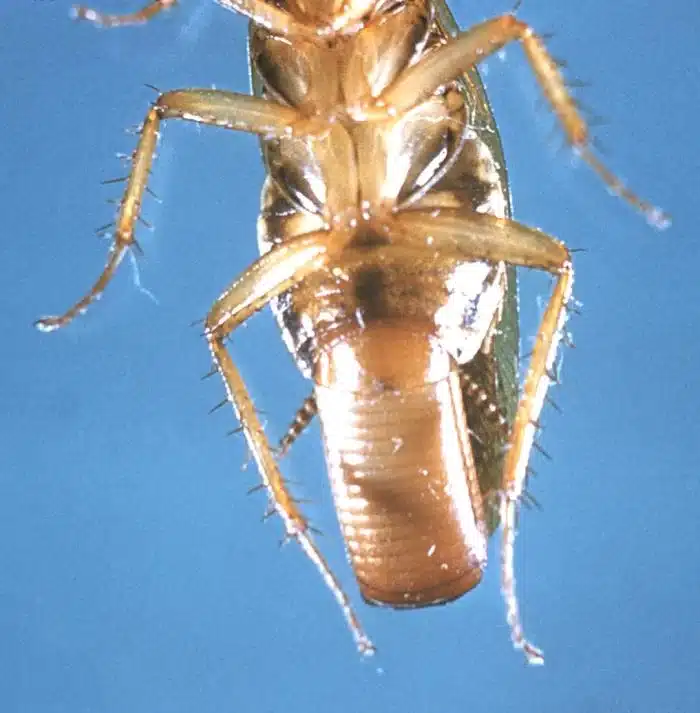When you spot a roach in your home, the first question that comes to mind is usually whether you’re dealing with a serious infestation or just a wandering bug. The difference between wood roaches vs German roaches can mean the difference between a minor nuisance and a major problem that needs immediate professional attention.
During my four years as a registered technician, I’ve seen countless homeowners panic over a single roach sighting. Our family business has been serving the DMV area for over 50 years, and in that time, we’ve learned that understanding the key differences between wood roaches vs German roaches can help homeowners make smart decisions about their pest control needs.
Key Differences at a Glance
Wood roaches are outdoor insects that occasionally wander indoors but cannot survive or reproduce in homes. They’re attracted to lights, die within 72 hours indoors, and pose no health risks.
German roaches are indoor pests that thrive in heated structures, reproduce rapidly, and spread diseases. They avoid light, hide in kitchens and bathrooms, and require professional treatment to eliminate.
Wood Roaches vs German Roaches: Identification and Key Features
Knowing how to tell wood roaches vs German roaches apart starts with understanding what you’re looking at. These two species look completely different once you know what to watch for.
Visual Differences
Wood roach males are chestnut-brown with clear wings that have pale margins along the edges. You won’t see any stripes running down their backs. The females look quite different - they’re shorter and have stubby, non-functional wings.
German roaches are light brown with two distinct dark stripes running lengthwise down their backs. Both male and female German roaches have wings, but they rarely use them for flying. When comparing German roaches to wood roaches, those twin stripes are the dead giveaway.
Size and Body Shape
Most wood roaches measure between 12-25 mm in length. The males are longer and more slender, especially with their fully developed wings. Females are more compact because their wings don’t develop properly.
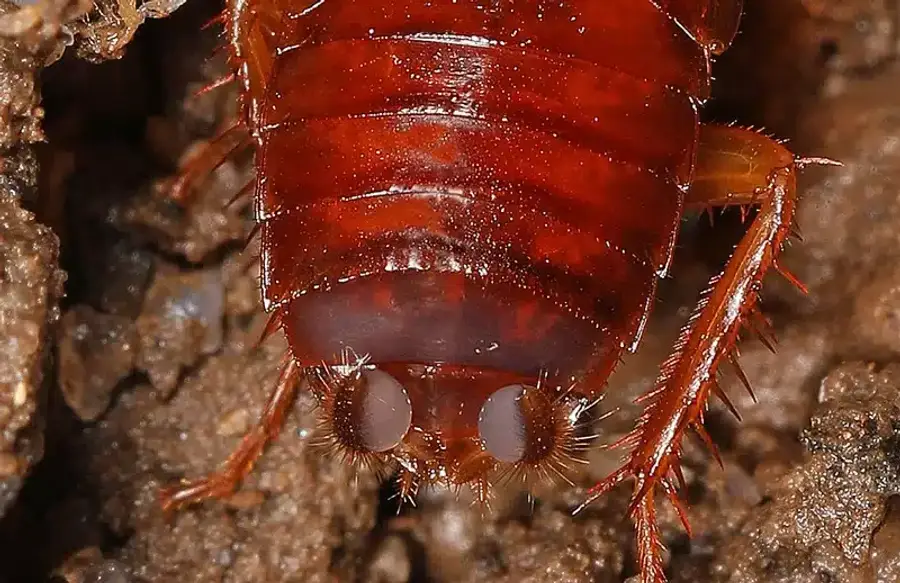
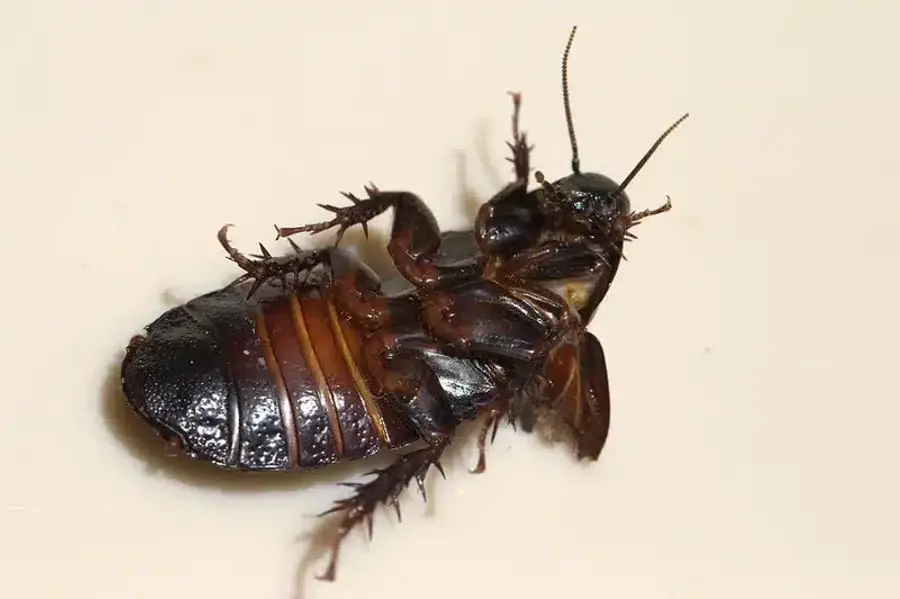
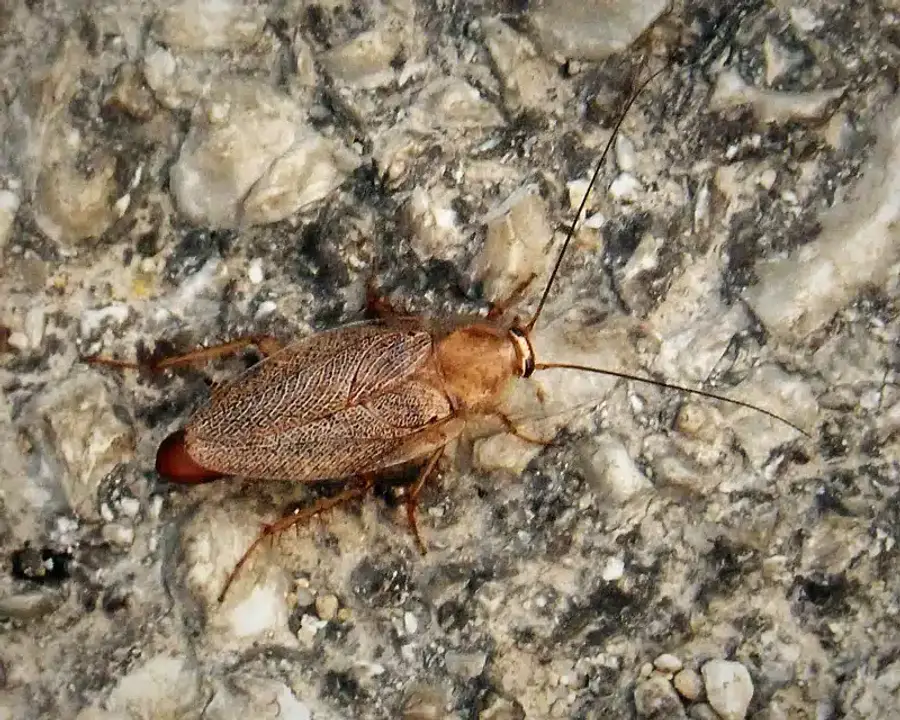
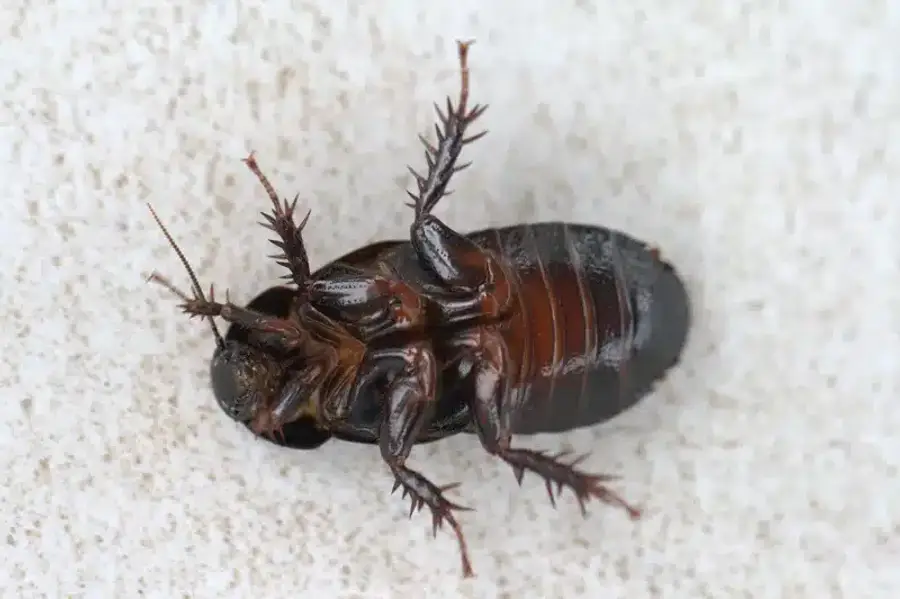
German roaches are typically 13-16 mm long, making them slightly smaller than most wood roaches. They have a more compact, oval-shaped body that’s built for squeezing into tight cracks and crevices.
Wing Structure and Flight
This is where wood roaches vs German roaches really differ in behavior. Male wood roaches are actually decent fliers and will fly toward outdoor lights during their mating season. Female wood roaches can’t fly at all due to their underdeveloped wings.
German roaches technically have wings but are terrible fliers. Instead, they rely on their speed to dart into dark hiding spots when lights come on. If you see a roach flying toward your porch light, it’s definitely a wood roach.
Wood Roaches vs German Roaches: Habitat and Preferences
The habitat preferences between wood roaches vs German roaches tell you everything about whether you’re dealing with an indoor or outdoor pest.
Typical Outdoor Habitat of Wood Roaches
Wood roaches live exclusively outdoors in natural environments. You’ll find them in leaf litter, under loose bark, in rotting logs, and around woodpiles. They also love clogged gutters full of decomposing leaves and damp garden sheds.
These roaches are basically nature’s cleanup crew. They break down organic matter in forests and wooded areas. According to Virginia Tech Extension, wood roaches require high moisture levels that simply don’t exist inside most homes.
Indoor Harborages for German Roaches
German roaches are the complete opposite. They’ve evolved to live specifically in heated human structures. You’ll find them hiding in warm, humid spots like behind kitchen appliances, inside bathroom cabinets, and around plumbing fixtures.
These roaches cluster in tight crevices near water sources. Think dishwasher insulation, refrigerator motors, and the spaces behind water heaters. Oriental roaches prefer basements and crawl spaces, but German roaches want to be right in your living areas where the food and warmth are.
Wood Roaches vs German Roaches: Attraction to Light
The way wood roaches vs German roaches respond to light is like night and day. This difference explains why you might find them in completely different situations.
Wood roach males have a strong attraction to lights during their mating flights, which typically happen in late spring. They’ll fly directly toward porch lights, landscape lighting, and lit windows. This behavior explains why homeowners suddenly find them near second-story windows or under outdoor fixtures.
German roaches do exactly the opposite. Research shows they actively avoid light and prefer dark hiding spaces. When you flip on a kitchen light at night and see roaches scurrying for cover, those are German roaches. They use this light-avoidance behavior to stay hidden during the day and only come out when it’s dark.
Wood Roaches vs German Roaches: Reproduction Rates and Life Cycles
The reproduction differences between wood roaches vs German roaches explain why one becomes a serious infestation while the other remains a minor nuisance.
Wood roaches have a slow, seasonal reproductive cycle. Females drop their egg capsules outdoors during summer, with each capsule containing about 30-32 eggs. The nymphs then overwinter once or twice before becoming adults, making the entire life cycle 12-24 months long.
German roaches reproduce at an alarming rate. According to Penn State Extension, a single female can produce 4-8 egg capsules during her lifetime, with each capsule containing 30-48 eggs. The entire life cycle takes only about 100 days under typical kitchen conditions.
This means German roaches can produce multiple generations per year, while wood roaches barely manage one generation annually. A single German roach female can theoretically produce over 10,000 descendants in a year under ideal conditions.
Wood Roaches vs German Roaches: Infestation Risk in Northern Virginia Homes
Understanding infestation risk is crucial when comparing wood roaches vs German roaches. The two species present completely different levels of concern for homeowners.
Wood roaches simply cannot survive indoors. They lose water too quickly in the low-humidity environment of most homes and typically die within 72 hours. Since they can’t reproduce indoors, there’s no risk of colony formation. When you find wood roaches, they’re usually wandering around openly because they’re already dying.
German Roach Health Risks
German roaches thrive in indoor environments and pose serious health risks to your family. They spread pathogens like salmonella and E. coli through their droppings and regurgitation. Their allergens trigger asthma attacks and allergic reactions, especially in children. Once established, populations can reach thousands of individuals feeding on crumbs, grease buildup, and condensation from appliances.
When dealing with big roaches in Virginia, size isn’t always the main concern - it’s the species’ ability to establish indoor colonies that matters most.
When Wood Roaches Infest vs German Cockroach Seasonal Activity
Seasonal timing helps distinguish between wood roaches vs German roaches sightings in Northern Virginia. Each species has distinct activity patterns throughout the year.
Wood roach activity spikes dramatically during their mating flights from May through June, with smaller flights occurring again in September and October. During winter months, the nymphs diapause outdoors under logs and leaf litter, so you won’t see any indoor activity.
German roach activity remains relatively constant year-round in climate-controlled homes. However, populations grow fastest during summer months in buildings without air conditioning. In our experience serving the DMV area, German roach calls increase during hot summers when people turn off A/C to save money.
Because German roaches can’t survive Virginia winters outdoors, any winter sightings are definitely from an established indoor population.
Why Finding Wood Roaches Indoors vs German Roaches Matters
The implications of finding wood roaches vs German roaches in your home are completely different. Knowing which species you’re dealing with helps determine your next steps.
Finding a wood roach indoors usually indicates nearby outdoor sources like stored firewood, leaf-filled gutters, or wooded areas close to your foundation. It’s basically a lost bug that wandered inside and will die naturally. No treatment is typically needed beyond identifying and addressing the outdoor source.
Discovering German roaches inside signals an active, reproducing infestation that requires immediate professional intervention. Even seeing a single German roach during daytime hours suggests overcrowding in their hidden harborage areas. These situations often involve thousands of roaches living behind appliances and inside wall voids.
Baby German cockroaches are particularly concerning because their presence confirms active reproduction is occurring inside your home.
Typical Entry Routes for Wood Roaches vs German Roaches
Understanding how wood roaches vs German roaches enter homes helps with prevention strategies. Each species uses different pathways based on their biology and behavior.
Wood roaches typically get carried inside on firewood or fly through large foundation gaps toward interior lights. During their spring mating flights, males will fly directly toward lit windows and sometimes find ways inside through screens or open doors.
German roaches are expert hitchhikers. They hide in grocery bags, cardboard boxes, and used appliances. In apartment buildings, they travel through shared plumbing chases and electrical conduits. Unlike wood roaches, German roaches actively seek out food sources and warm hiding spots.
Prevention Tips: Keeping Wood Roaches vs German Roaches Out
Prevention strategies for wood roaches vs German roaches target completely different behaviors and entry methods.
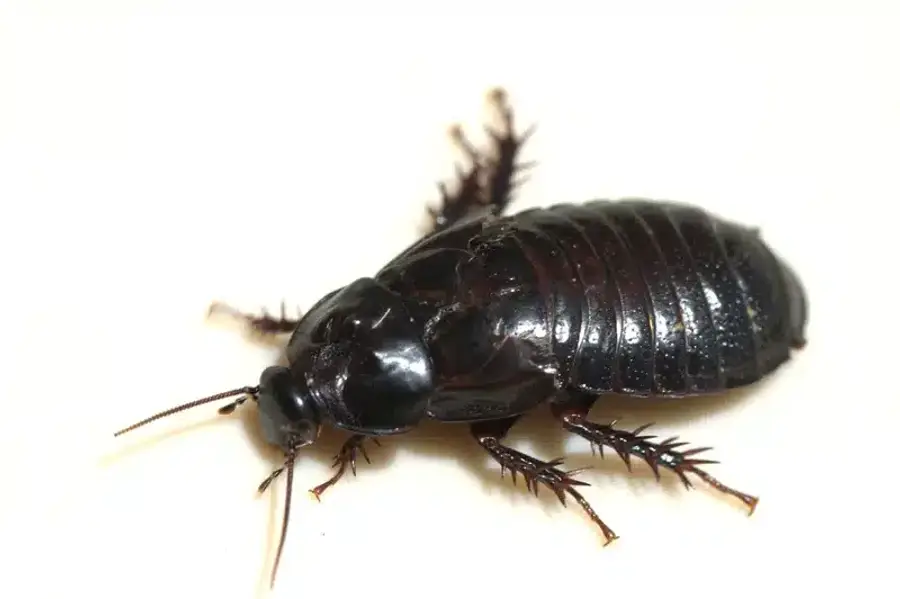
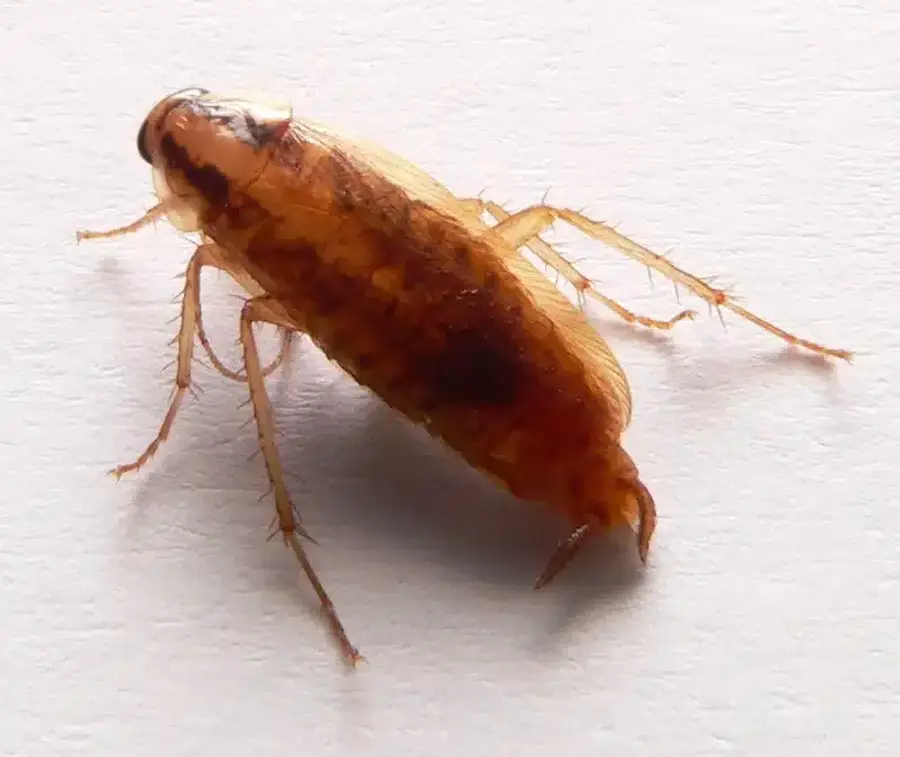
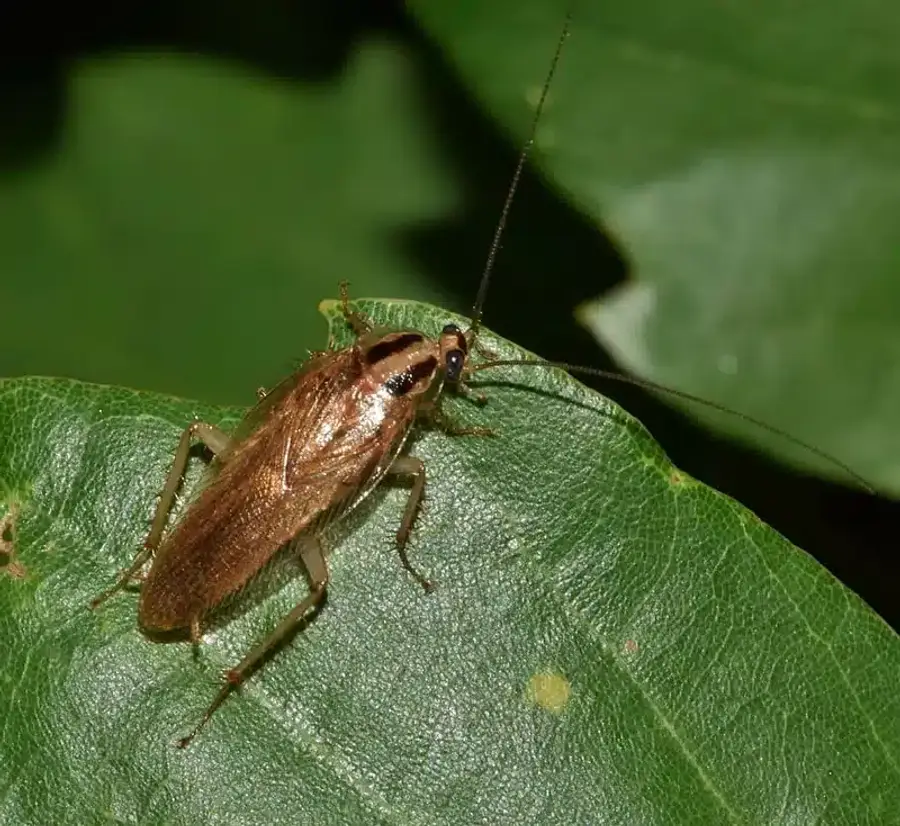
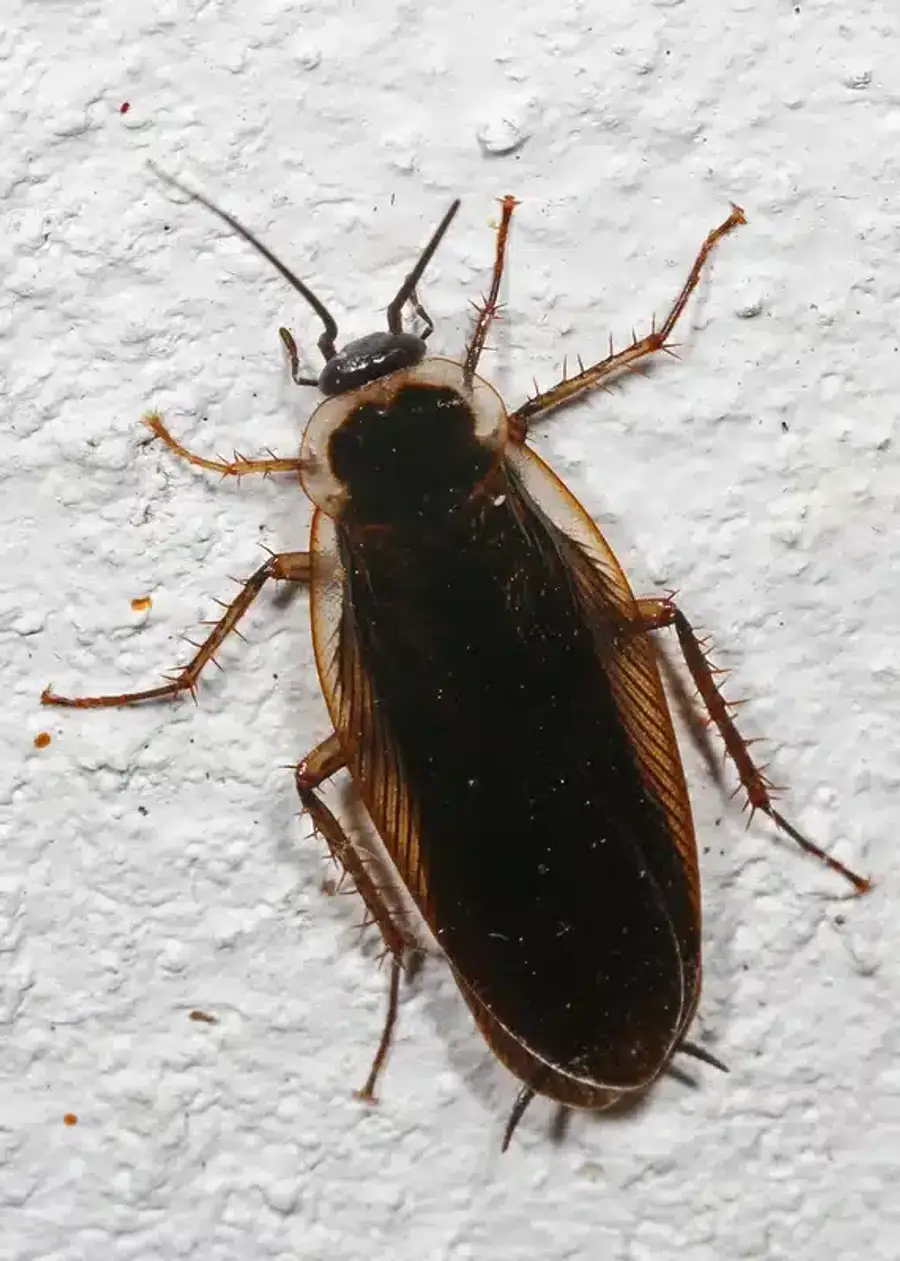
Professional treatments for small roaches often focus on crack-and-crevice applications using non-repellent materials that eliminate entire colonies.
Diagnostics and Field Notes from a Third-Generation Technician
After years of responding to roach calls, I’ve learned that behavior observations often provide the clearest distinction between wood roaches vs German roaches.
Daytime Wandering vs Nighttime Scurrying
Wood roaches wander around slowly in full daylight and don’t seem particularly bothered when you approach them. They’re essentially dying from dehydration and can’t mount much of an escape response.
German roaches are lightning-fast and immediately dart toward the nearest crack when lights come on. If you see a roach that bolts for cover the moment you enter a room, that’s definitely a German roach exhibiting classic light-avoidance behavior.
Ootheca Observations
Wood roach egg capsules are found outdoors under bark or in leaf litter. You’ll never find their oothecae inside homes because females don’t live long enough indoors to reproduce.
German roach females carry their oothecae for about 28 days until hatching, so you might actually see them walking around with the capsule protruding from their abdomen. Finding these egg cases inside is a clear sign of active reproduction.
Treatment Approaches: When to Call Better Termite & Pest Control
Treatment decisions for wood roaches vs German roaches depend entirely on species identification and infestation risk assessment.
Handling Occasional Wood Cockroach Sightings
Wood roach control focuses on exclusion and habitat modification rather than pesticide applications. Most situations resolve by addressing outdoor conditions that attract them to your home’s perimeter.
Simple steps like adjusting exterior lighting schedules, relocating firewood storage, and sealing large entry points usually eliminate wood roach issues. Because they can’t reproduce indoors, there’s no need for intensive interior treatments.
Addressing German Roach Infestations
German roach control requires systematic crack-and-crevice treatments using non-repellent insecticides and growth regulators. Our registered technicians focus on kitchen and bathroom areas where these roaches hide during daylight hours.
We deploy bait stations and monitoring devices to track population reduction over time. Realistic expectations involve 3-6 month treatment timelines because German roach colonies can be extensive by the time homeowners notice them.
Boric acid treatments have limitations, especially for established infestations that require professional-grade materials and application techniques.
Our approach involves thorough inspection followed by targeted treatments behind appliances, inside electrical outlets, and along plumbing penetrations. We schedule follow-up visits to monitor progress and adjust treatment strategies as needed.
Understanding the differences between wood roaches vs German roaches helps homeowners make informed decisions about professional intervention. Wood roach sightings rarely require professional treatment, while German roach discoveries almost always benefit from expert assessment and systematic control programs.
Frequently Asked Questions
What attracts wood roaches vs german roaches to my home?
+
Wood roaches are attracted to outdoor moisture sources and bright lights during their spring mating flights. They're drawn to decomposing organic matter like leaf piles and stored firewood. German roaches seek indoor warmth, food debris around appliances, and water leaks in kitchens and bathrooms.
Can wood roaches breed indoors like german roaches?
+
No, wood roaches cannot reproduce indoors. They require high humidity levels that don't exist in most homes and typically die within 72 hours of entering. German roaches thrive in indoor conditions and can produce multiple generations per year, with each female creating 4-8 egg capsules containing 30-48 eggs each.
Are wood roaches harmful to my family's health?
+
Wood roaches pose no documented health risks to humans or pets. They're essentially outdoor decomposer insects that occasionally wander inside by accident. German roaches spread pathogens like salmonella, trigger asthma and allergy symptoms, and contaminate food surfaces through their droppings and regurgitation.
How can I prevent german roach infestations in my kitchen?
+
Keep all surfaces completely free of crumbs and grease, especially behind appliances and inside cabinets. Fix water leaks immediately, seal cracks around plumbing with caulk, and store food in sealed containers. Inspect grocery bags before bringing them inside, and consider professional crack-and-crevice treatments in high-risk areas.
When should I call a professional for roach control?
+
Occasional wood roach sightings during spring months usually don't require professional treatment—focus on exclusion and outdoor habitat modification instead. Any German roach sighting, especially during daylight hours, warrants professional assessment because it indicates a hidden colony that's likely much larger than what you're seeing.
Do flying roaches mean I have a different type of infestation?
+
[Flying cockroaches](/flying-cockroach/) are typically male wood roaches during their mating flights in late spring. German roaches rarely fly despite having wings. If you see roaches flying toward outdoor lights in May or June, they're probably wood roaches. Indoor flying behavior is uncommon with German roaches, who prefer running to dark hiding spots.
How long does it take to eliminate german roach infestations?
+
German roach elimination typically takes 3-6 months with professional treatment because colonies can contain thousands of individuals hiding throughout kitchen and bathroom areas. [Baby roaches](/baby-roach-identification/) continue emerging from egg cases for several weeks after initial treatment, requiring follow-up visits and monitoring to ensure complete population elimination.
With five years of hands-on experience in the pest control industry, George Schulz is a registered technician with the Virginia Pest Management Association and a proud third-generation professional in a family business that’s been protecting homes for over 57 years. He manages and trains a team of service pros while also leading internal research efforts—recently spearheading a deep-dive review of thousands of documents on pest control materials to hand-pick the most kid and pet friendly, most effective solutions tailored specifically for homes in the DC metro area.
